In addition, gunners received considerable classroom instruction in gunnery principles, aeronautics and ballistics.
Timing became a critical factor as more and more combat squadrons needed an ever-increasing number of trained gunners.
Meanwhile, the combination of practical and theoretical training was overloading the new recruits.
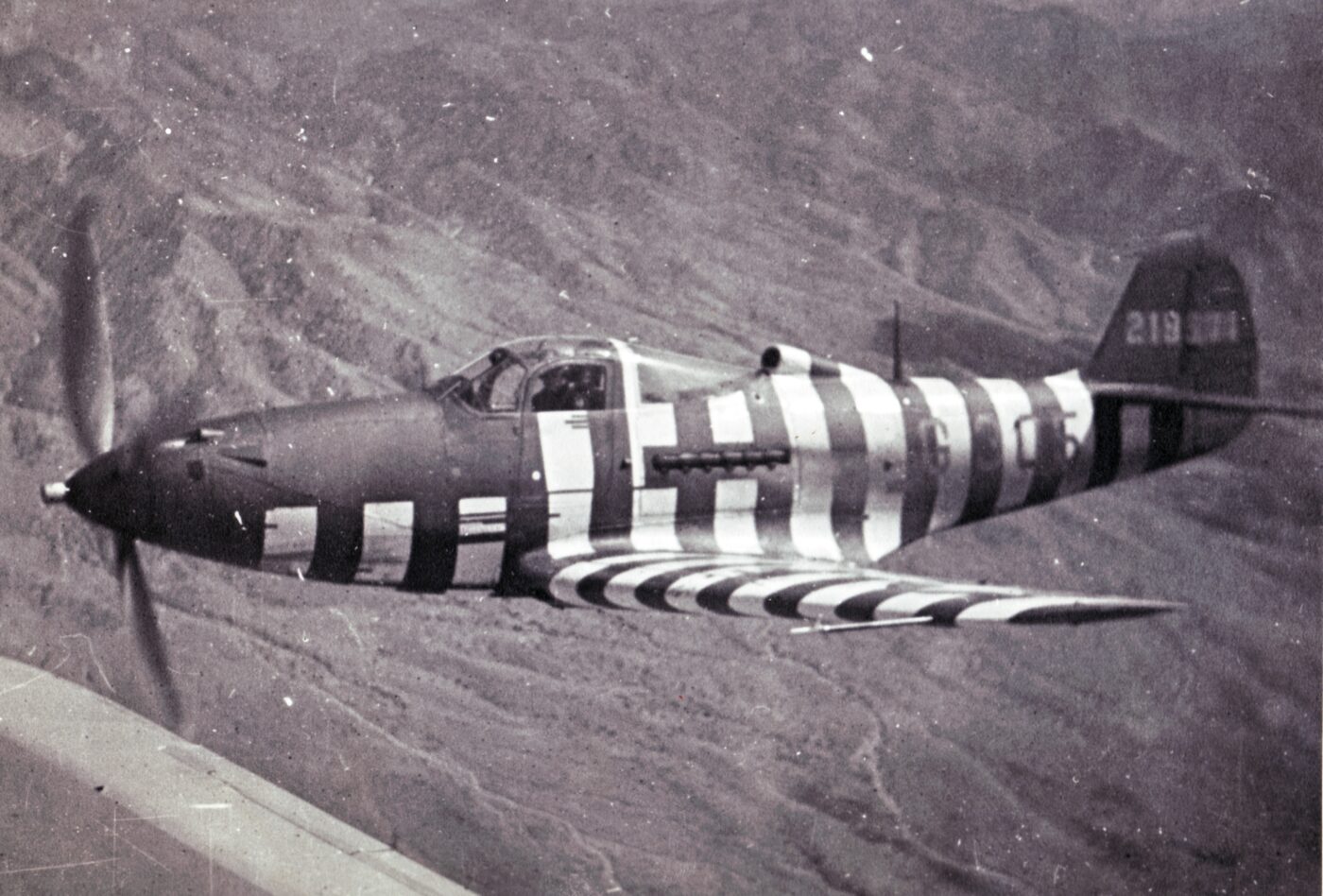
A converted Bell Kingcobra RP-63 over the southwestern desert. Image: Tom Matye
The USAAF continued to look for better ways to provide quick and practical training to air gunners.
One of these efforts was the rather odd Project Pinball.
Working with professors at Duke University Major Fairchild set out to make frangible ammunition made from glass.
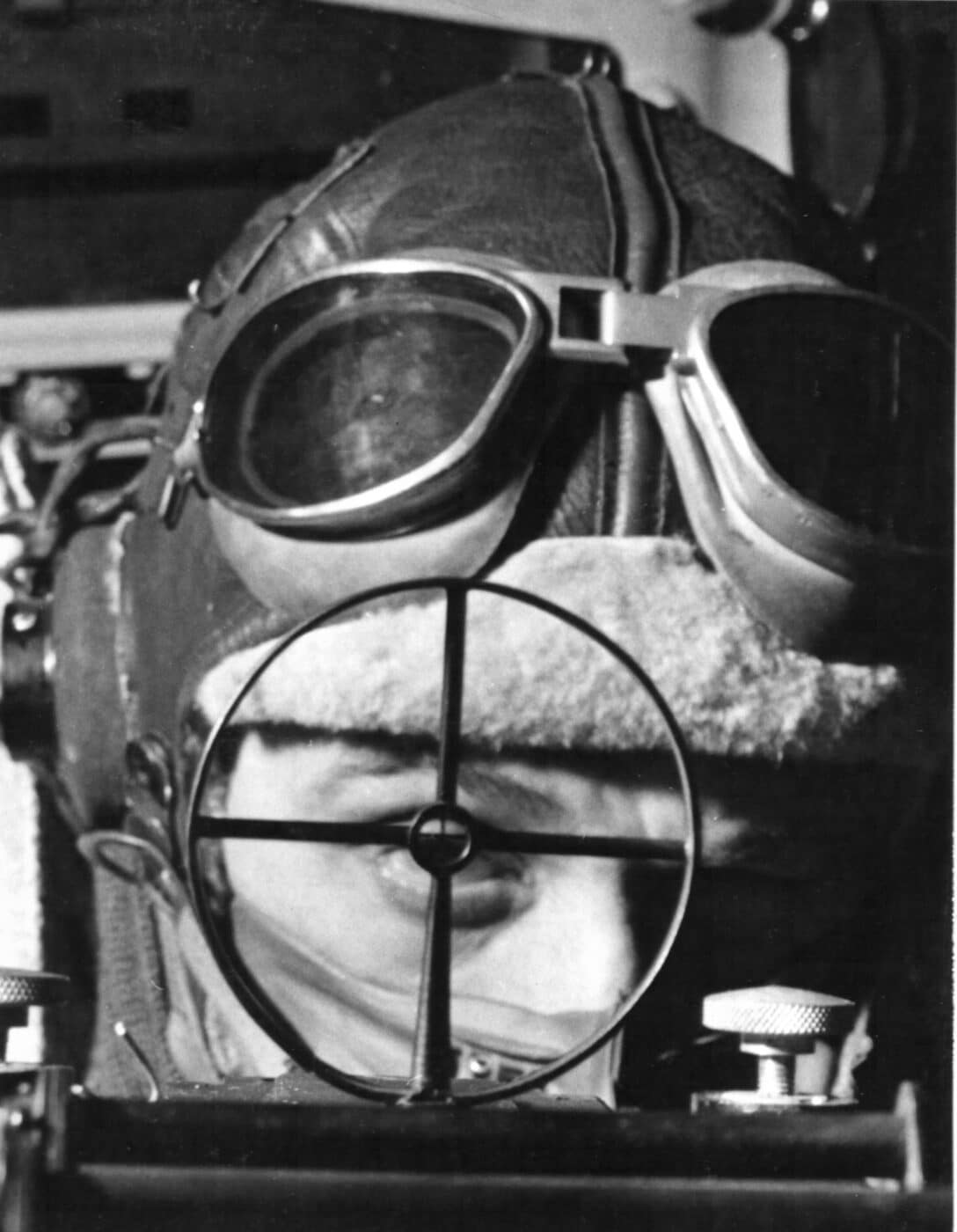
The gunner’s eye view above a Browning .50 caliber AN/M2 machine gun in a U.S. bomber. Image: NARA
Project Pinball was underway, in hopes of finally bringing realistic training to air gunnery training centers.
The P-39 was handicapped by its lack of a turbo-supercharger, restricting the Airacobra to low-level missions.
By the end of 1943, Bell had produced the more powerful P-63 Kingcobra.
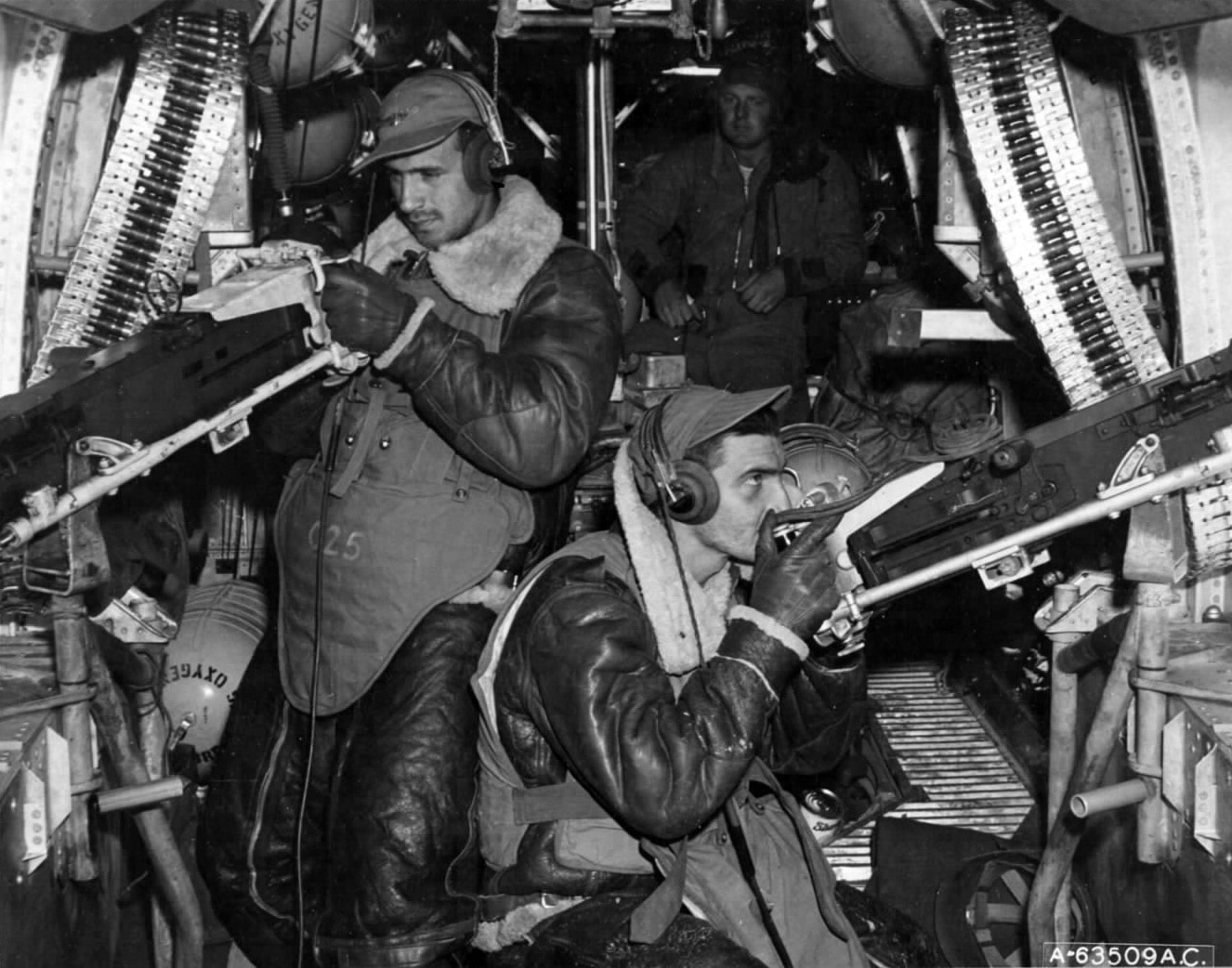
Consolidated B-24 Liberator waist gunners manning machine guns and wearing “flak suits” during a mission over Wake Island in 1944. Image: NARA
Even so, the USAAF did not accept the Kingcobra for combat duty, but the Soviets gladly did.
Of course, official Soviet records only describe P-63 operations against the Japanese, beginning in August 1945.
The modified P-63 was designated RP-63, and the strange target aircraft nicknamed Pinball.
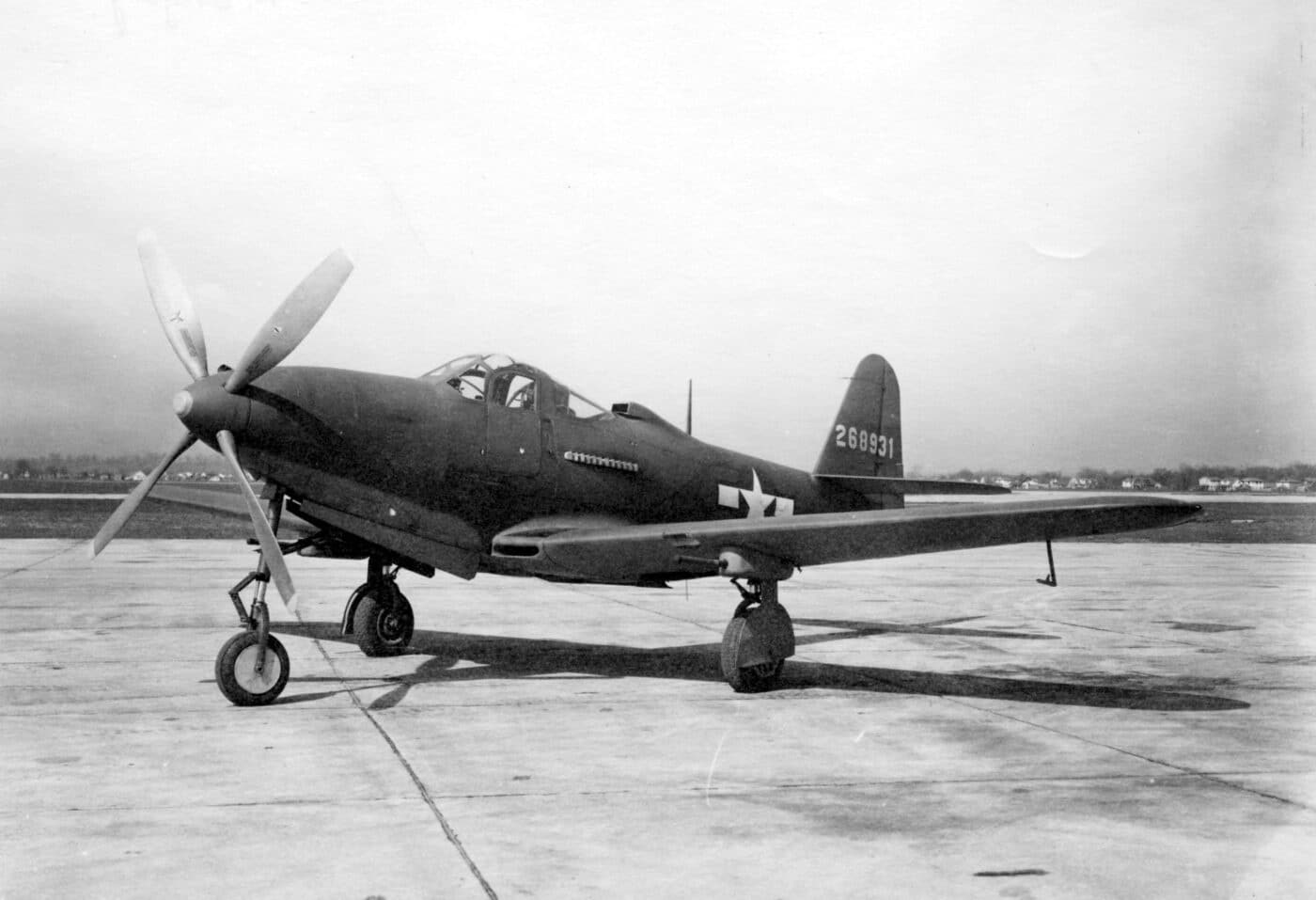
This is the standard, unmodified Bell P-63 Kingcobra that would later be used in Project Pinball. Image: U.S. Air Force
Such are the perils of training with what is essentially live ammunition.
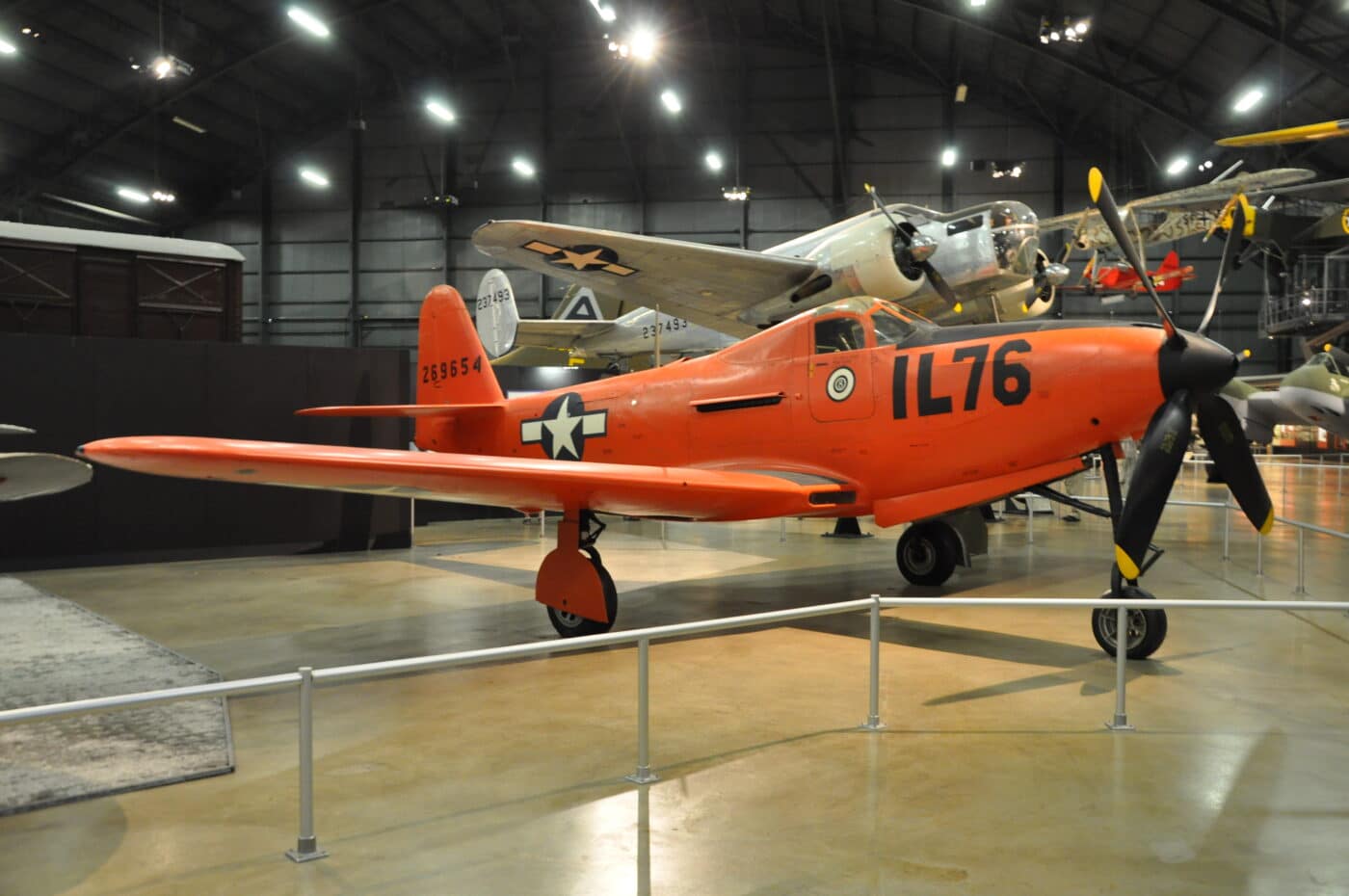
The RP-63 “Pinball” on display at the U.S. Air Force Museum. Note that there is no light bulb mounted in the propeller hub. Image: Author’s collection
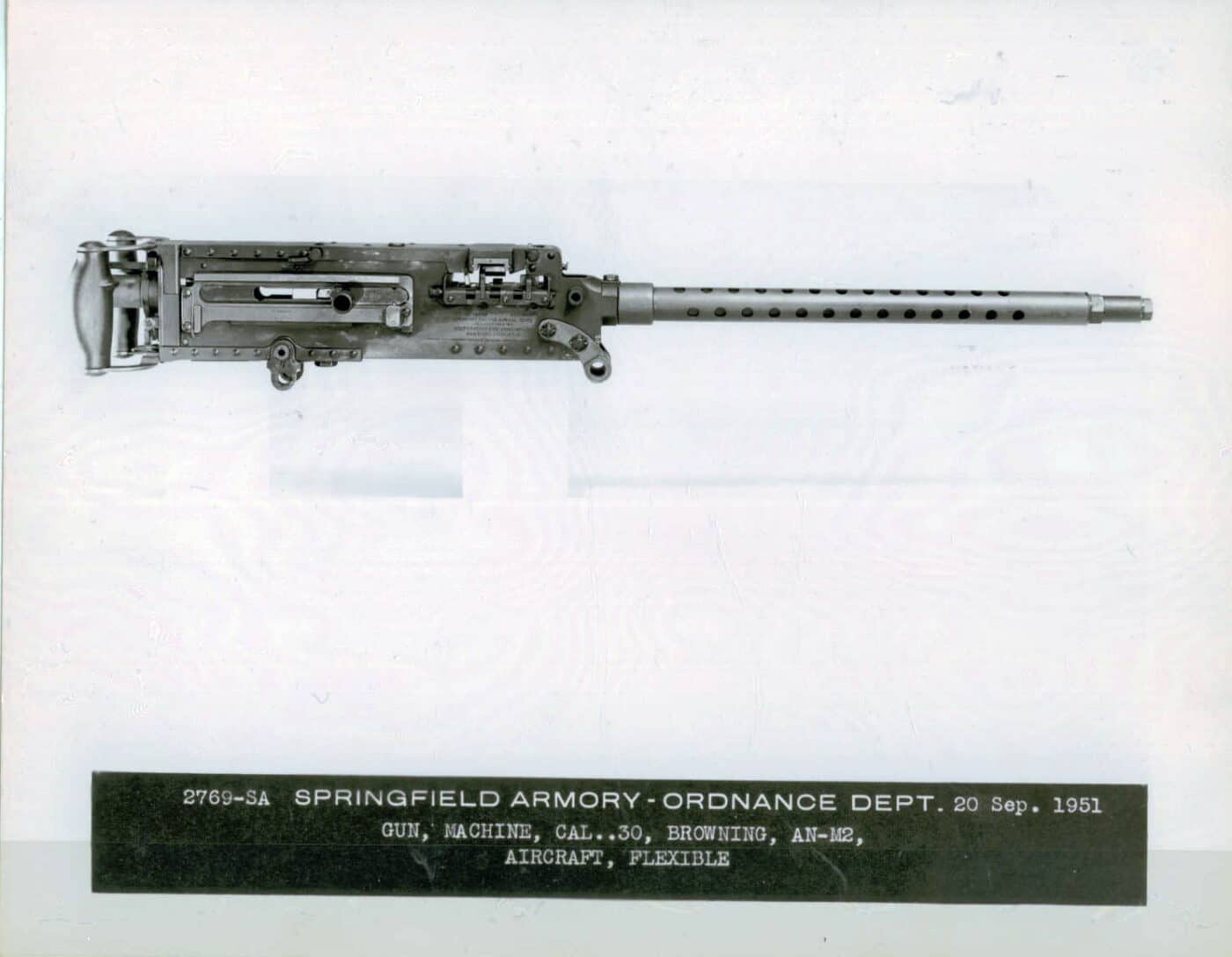
The Browning AN/M2 .30 caliber “flexible” aircraft gun—the type used in the Project Pinball training. Image: SANHS
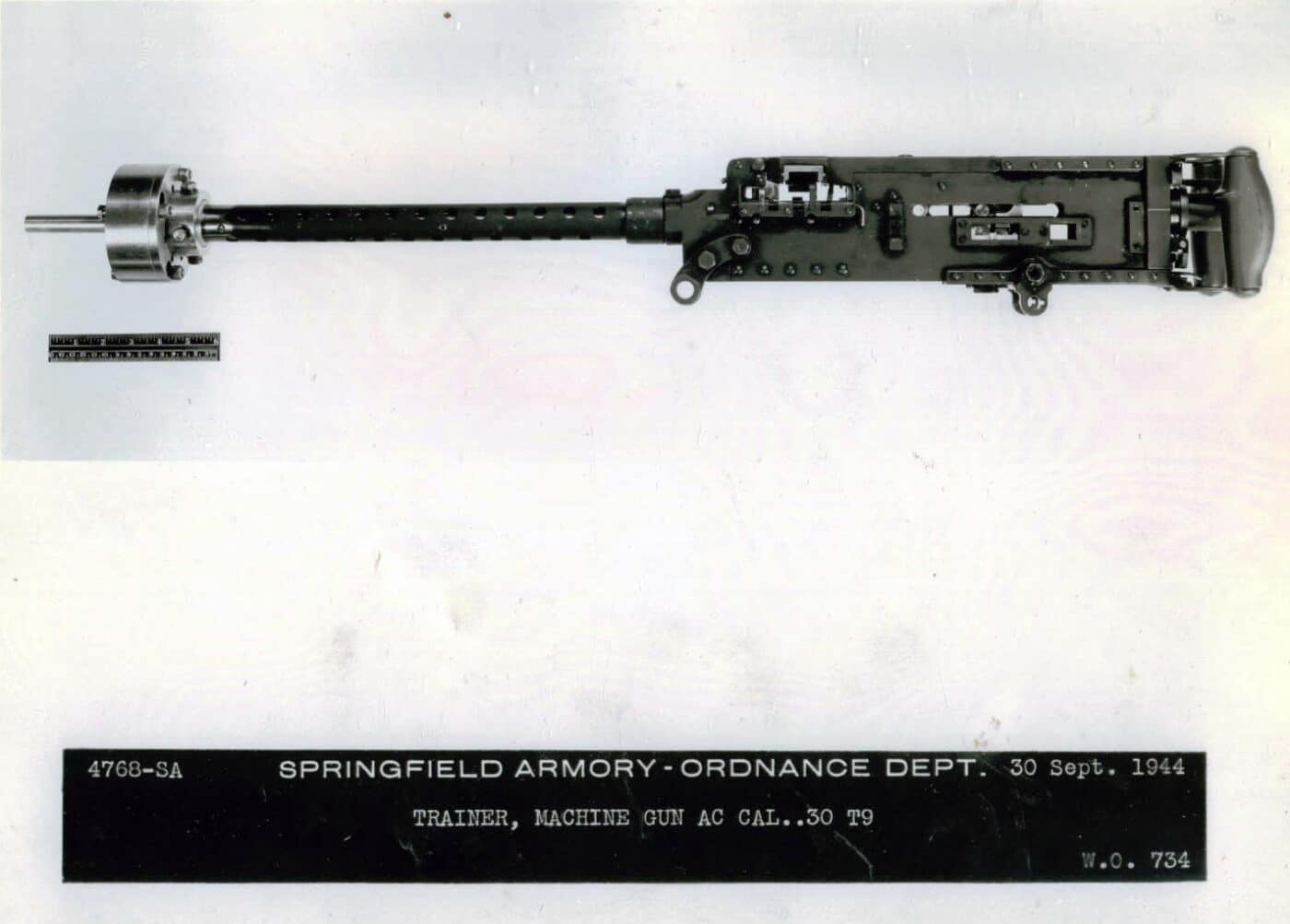
The T9 was a further development of the .30 caliber AN/M2, intended for training. Image: SANHS




